The PJDAM would be very useful for use in Ukraine both as a budget cruise-missile and as a decoy to spoof Russian SAM batteries making them expend expensive and difficult to replace missiles, I mean they Ukrainians have already used donated surplus ADM-160Bs from the US in that role.
You are using an out of date browser. It may not display this or other websites correctly.
You should upgrade or use an alternative browser.
You should upgrade or use an alternative browser.
Powered JDAM
- Thread starter Grey Havoc
- Start date
I can't imagine production would occur in a timeframe that would be useful to Ukraine. But if the US can stamp out 300nm GPS guided cruise missiles for a few hundred thousand or less, then that clearly has a lot of utility.The PJDAM would be very useful for use in Ukraine both as a budget cruise-missile and as a decoy to spoof Russian SAM batteries making them expend expensive and difficult to replace missiles, I mean they Ukrainians have already used donated surplus ADM-160Bs from the US in that role.
I can't imagine production would occur in a timeframe that would be useful to Ukraine.
Given that we're looking at a protected war lasting at least another two years I can see the PJDAM (Or should that be called the JDAM-LR?) tail-kit going into production followed by a fully redesigned powered JDAM tail-kit with a proper jet-exhaust ventilating behind the tail-fins.
- Joined
- 16 April 2008
- Messages
- 8,398
- Reaction score
- 10,359
Given that we're looking at a protected war lasting at least another two years I can see the PJDAM (Or should that be called the JDAM-LR?) tail-kit going into production followed by a fully redesigned powered JDAM tail-kit with a proper jet-exhaust ventilating behind the tail-fins.
PJDAM is Boeing's terminology. I don't think they have any interest in redesigning the tail section, because that would mean losing all of the economies of scale that come with using a basic JDAM tail-kit. If they can get 300+ nm (700+ nm as a decoy) I don't think they're throwing much away with the current exhaust, weird as it looks.
Here is the actual data card, BTW. Apparently published last year.
Attachments
Last edited:
If these tail-kits go into production and are deployed in Ukraine in addition to the Mk-82 500Lb warhead they could also be used in a similar role to the donated ADM-160B MALDs to spam Russian SAM batteries in not only missile-attacks to also make the Russians expend expensive and hard to replace interceptor missiles especially the ones used in the SA-12/20/21 batteries.
Scott Kenny
ACCESS: Above Top Secret
- Joined
- 15 May 2023
- Messages
- 5,999
- Reaction score
- 4,855
Tor missiles are under $150k each? And I wouldn't be surprised if the incremental price of a PJDAM was under $100k...Tor was designed SPECIFICALLY to win that cost equation.
For low altitude cruise, a tiny turbofan is far more fuel efficient.I do wonder if a pulsejet could be a sensible engine for a powered JDAM.
- Joined
- 4 July 2010
- Messages
- 2,228
- Reaction score
- 2,137
They have a working engine with the performance they want, what's the advantage of developing a pulse jet from scratch? Bear in mind, keeping costs contained is a key requirement.I do wonder if a pulsejet could be a sensible engine for a powered JDAM.
kqcke for you
PUMA PUMA PUMA
- Joined
- 3 November 2022
- Messages
- 540
- Reaction score
- 413
I think its a good Idea. Cheaper than other Cruise missiles and more choices for the warhead which you can Switch anytime
- Joined
- 13 June 2007
- Messages
- 2,029
- Reaction score
- 2,251
Ah, that explains it - thanks! MarkOh, jeez, I didn't notice that.
Ah ha. Turns out that TDI makes a microturbine called the TDI-J85. So, the identity of the PJDAM engine is a mystery no more.
The TDI-J85 weighs just under 30 pounds and generates a maximum of 200 lbf of thrust.
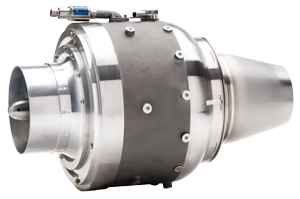
TDI-J85 - TDI
Specifications Performance Data (SLS) – TDI-J85 Thrust (idle – max) 20-200 lbf (88-890 N) Airflow 2.00 lbm/sec (0.91 kg/sec) Electrical Output (idle – max) 1.2 kW Engine-Generator Weight 28 lbm (12.7 kg) Fuel Pump Weight 1.4 lbm (0.65 kg) Ignition Pyroflare Weight 0.3 lbm (0.12 kg)tdi-engines.com
- Joined
- 16 April 2008
- Messages
- 8,398
- Reaction score
- 10,359
I think its a good Idea. Cheaper than other Cruise missiles and more choices for the warhead which you can Switch anytime
I was trying to think of what other warheads are currently out there with Mk82 form factors. There's a couple of low-collatwral damage types (one with reduced fill and one with a carbon fiber case) but I think that's about it for the US. Turkey apparently has a thermobaric version.
What I'd especially want is something with more explosive fill. As a bottom-laid sea mine, a charge of <200 lb is a bit underwhelming. But adding more explosive at the expense of case thickness will screw up the weight of the warhead (fill being less dense than steel).
timmymagic
Forever disappointed in MoD procurement...
- Joined
- 23 August 2011
- Messages
- 1,055
- Reaction score
- 2,801
What I'd especially want is something with more explosive fill. As a bottom-laid sea mine, a charge of <200 lb is a bit underwhelming. But adding more explosive at the expense of case thickness will screw up the weight of the warhead (fill being less dense than steel).
The original Powered JDAM proposal from 2017 must have been for a 1,000lber Mk.83 with the range as up to 160nm.
They have a working engine with the performance they want, what's the advantage of developing a pulse jet from scratch? Bear in mind, keeping costs contained is a key requirement.
It will be interesting to see how far these guys get...
https://wave-engine.com/
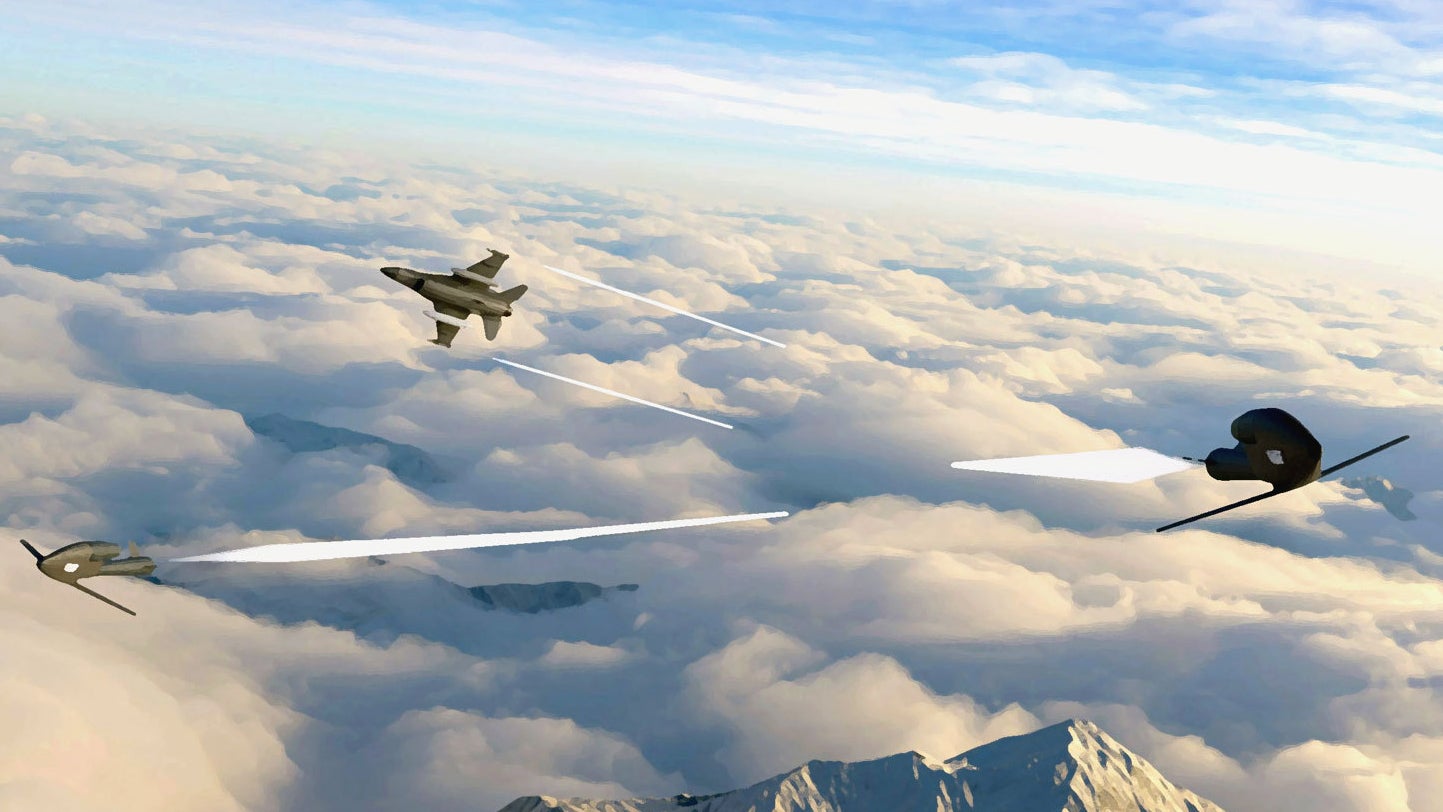
Air Force Finds New Need For Low-Cost Engine Tech Used On Nazi Buzz Bombs
A startup is reviving the powerplant used in the V-1 flying bomb for use in an air-launched decoy, and possibly more.
I was trying to think of what other warheads are currently out there with Mk82 form factors. There's a couple of low-collatwral damage types (one with reduced fill and one with a carbon fiber case) but I think that's about it for the US. Turkey apparently has a thermobaric version.
What I'd especially want is something with more explosive fill. As a bottom-laid sea mine, a charge of <200 lb is a bit underwhelming. But adding more explosive at the expense of case thickness will screw up the weight of the warhead (fill being less dense than steel).
Eh, probably good enough for most ships and not worth the investment of a dedicated weapon. The Mk65 Quickstrike is exactly what you suggest in the 2000lb class - but it probably can't use Mk80 add on kits. In any case, the mine that wounded USS Princeton was a 300 lb class Italian bottom mine that fused sub optimally when the ship swung across it (it was maneuvering with one screw ahead, one reverse). That was enough to send it home. Weapons were back online in minutes but propulsion I think took hours, in a very calm body of water. Had the vessel run directly over it and it fused amid ship as intended, it probably would have been crippled. It certainly is enough bang that you wouldn't take your chances running any other ships through the area without at least a mine avoidance sonar, and area denial is goal more than tonnage sunk.
- Joined
- 16 April 2008
- Messages
- 8,398
- Reaction score
- 10,359
The original Powered JDAM proposal from 2017 must have been for a 1,000lber Mk.83 with the range as up to 160nm.
The Quickstrike-ER apparently comes in either 500- or 2000-lb versions.
It will be interesting to see how far these guys get...
https://wave-engine.com/

Air Force Finds New Need For Low-Cost Engine Tech Used On Nazi Buzz Bombs
A startup is reviving the powerplant used in the V-1 flying bomb for use in an air-launched decoy, and possibly more.www.thedrive.com
I thought the USAF's current interest was in RDE (Rotating Detonation Engines) type engines?
I thought the USAF's current interest was in RDE (Rotating Detonation Engines) type engines?
They have a lot of interests. Some are high performance bespoke weapons like HACM and RDE research, but another more recent concern is generating more cost effective stand off weapons like the Speed RACER and Grey Wolf projects.
Last edited:
kqcke for you
PUMA PUMA PUMA
- Joined
- 3 November 2022
- Messages
- 540
- Reaction score
- 413
Isn't TDI-85 the same engine Grey Wolf has? Maybe this is boeings try for an Alternative as using GP bombs and JDAM parts makes it very cheap.
kqcke for you
PUMA PUMA PUMA
- Joined
- 3 November 2022
- Messages
- 540
- Reaction score
- 413
I think its perfect for rapid Dragon launch
Isn't TDI-85 the same engine Grey Wolf has?
According to the wikipedia article on Kratos, yes.
- Joined
- 16 April 2008
- Messages
- 8,398
- Reaction score
- 10,359
I feel that they should just drop the "JDAM" name .... this engine add-on with fuel is going to increase the cost and complexity, and it does the "JDAM" brand name, associated with cost effectiveness, no justice .....
Not sure why. It's an adaptation of existing JDAM and JDAM-ER hardware (guidance, wing kit, etc), most of which is built on the existing assembly line. It's compatible with other add-ons designed for or used with JDAM (Quickstrike, Quicksink, probably LJDAM, etc.) All of which means it should work on any aircraft that already works with 2000-lb JDAM with minimal clearance effort.
The propulsion segment seems pretty simple, especially considering the engine was designed for another extremely low cost system (Grey Wolf). Microturbine engines are not a mystery these days.
Powered JDAM actually seems like a logical extension of the JDAM "brand" to a low-cost standoff weapon, given that it will be quite possibly an order of magnitude cheaper than its more polished counterparts.
Last edited:
Powered JDAM actually seems like a logical extension of the JDAM "brand" to a low-cost standoff weapon, given that it will be quite possibly an order of magnitude cheaper than its more polished counterparts.
I won't be surprised if the US DoD takes up Boeing's powered JDAM (They'd definitely be interested in a short-range budget cruise-missile) and if it's put into production I can see it being used in Ukraine.
Talking about PJDAM I wonder if we'll see a powered SDB developed (Something akin to BAe's SPEAR 3).
aonestudio
I really should change my personal text
- Joined
- 11 March 2018
- Messages
- 2,546
- Reaction score
- 5,969
SAN DIEGO, Oct. 16, 2023 (GLOBE NEWSWIRE) -- Kratos Defense & Security Solutions, Inc. [Nasdaq: KTOS], a Technology Company in the Defense, National Security and Global Markets, today announced a Memorandum of Understanding between Technical Directions, Inc. (TDI), a business unit within Kratos Unmanned Systems Division, and Boeing [NYSE: BA] for the TDI-J85 turbine engine to provide propulsion for the Powered Joint Direct Attack Munition (JDAM).
Boeing’s Powered JDAM combines a 500-pound ordnance, the conventional JDAM guidance kit, with a wing kit and a Kratos TDI-J85 engine to deliver high-end range at an affordable price. The cost savings is in part due to the low-cost turbine engine technology developed and enhanced by TDI over four decades. Powered JDAM will provide low-cost stand-off capability against land and maritime threats. Leveraging the JDAM family of weapons, it is designed to be produced at scale, exportable to any of the 35 JDAM partner nations, at a cost-point that enables affordable mass.
The TDI-J85 straightforward architecture is capable of producing 200-lbf of net thrust at Sea-Level Static conditions. Specific Powered JDAM requirements are met with design adjustments achieving the desired thrust output at design point. The TDI-J85 is compatible with commercial and/or military kerosene-grade turbine fuels. The TDI-J85’s shaft-integral permanent magnet generator will produce up to 1.5 kW of AC power, from idle through maximum engine speeds, for P-JDAM’s onboard power requirements.
timmymagic
Forever disappointed in MoD procurement...
- Joined
- 23 August 2011
- Messages
- 1,055
- Reaction score
- 2,801
Talking about PJDAM I wonder if we'll see a powered SDB developed (Something akin to BAe's SPEAR 3).
Raytheon have talked about a powered SDB II before, don't think it has progressed to date.
MBDA, in turn, have also mentioned a Spear-Glide variant. Essentially Spear without the engine and fuel but larger warhead, essentially a direct SDB II competitor.
- Joined
- 16 April 2008
- Messages
- 8,398
- Reaction score
- 10,359
Raytheon have talked about a powered SDB II before, don't think it has progressed to date.
Proposed for SPEAR Cap 3 in 2015, apparently, but not accepted (Spear obviously being preferred).
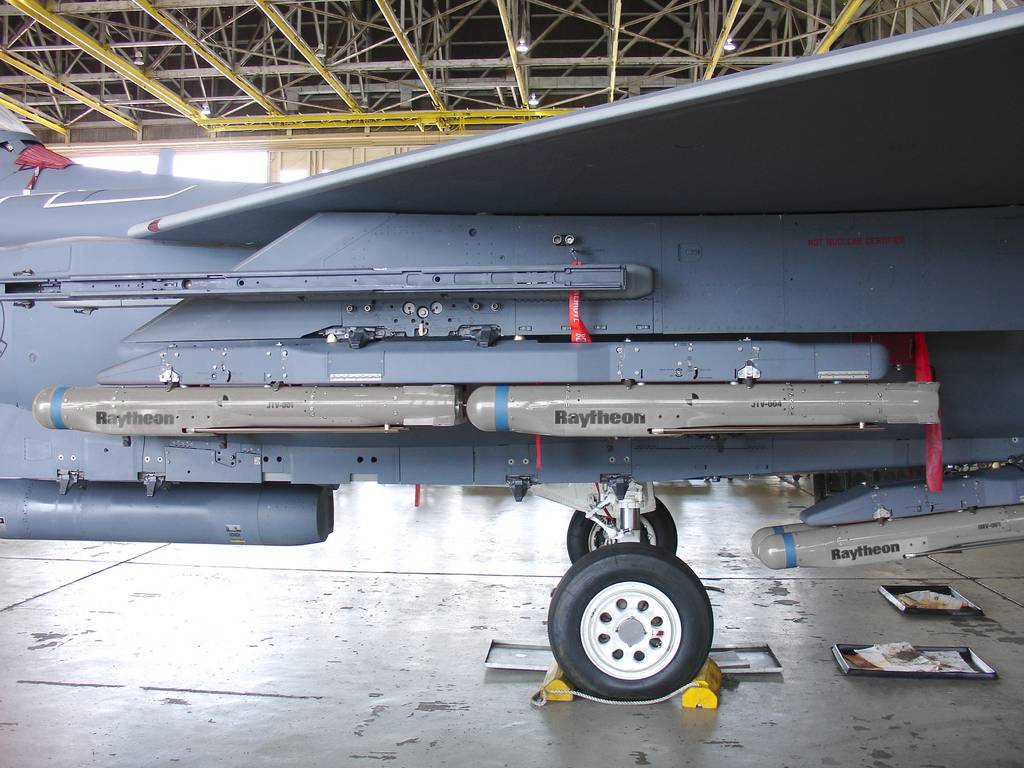
Raytheon Considers Powered SDB for UK F-35s
PARIS — Raytheon Missile Systems is open to developing a powered version of the Small Diameter Bomb II (SDBII) to meet a British requirement for a mini-cruise missile it is looking to purchase for its fleet of F-35 combat jets, according to Taylor Lawrence, president of the company's missile...
kqcke for you
PUMA PUMA PUMA
- Joined
- 3 November 2022
- Messages
- 540
- Reaction score
- 413
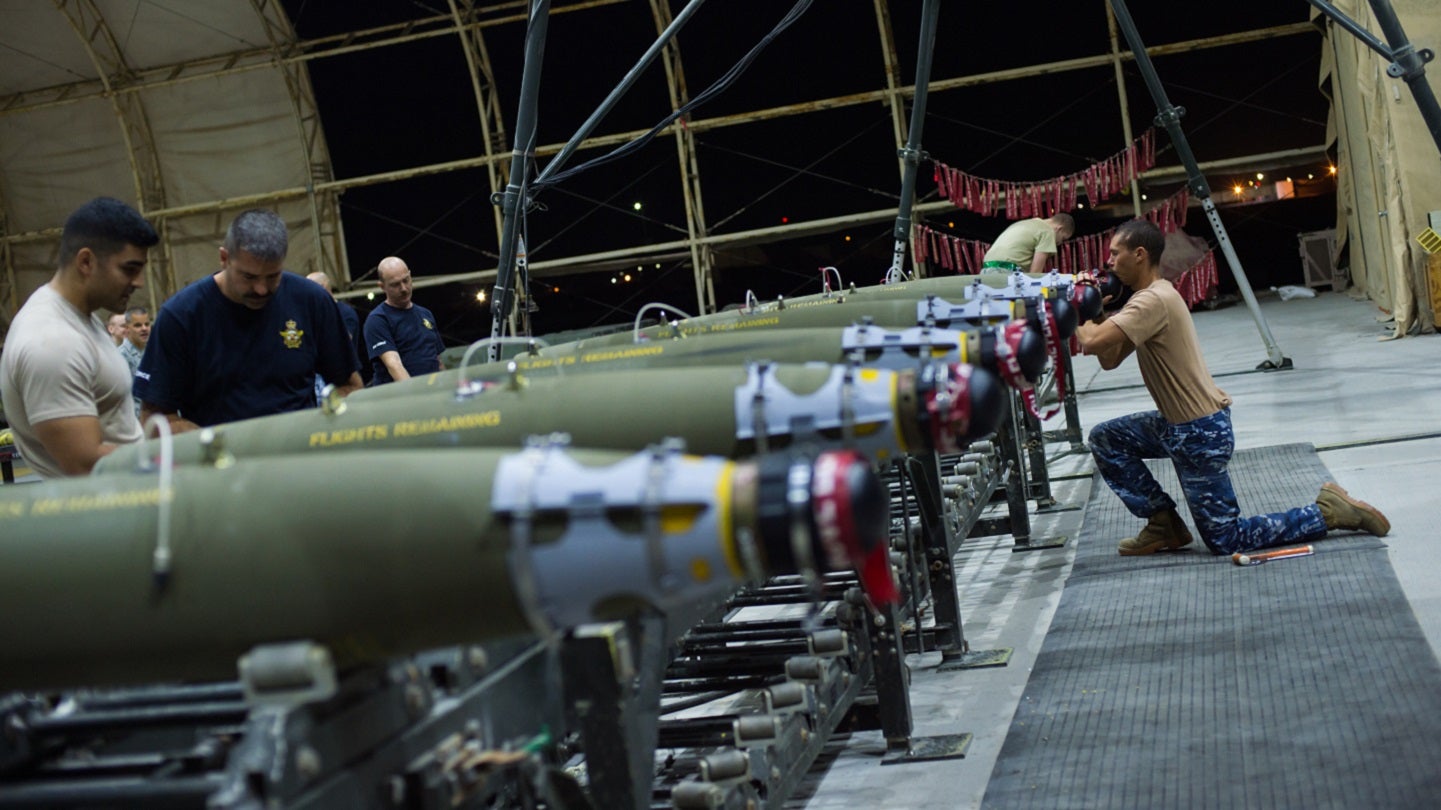
Boeing and Kratos TDI sign MoU on Powered JDAM munition - Airforce Technology
The integration of an engine into the existing JDAM kit will provide increased range for 500lb air-released munitions.
kqcke for you
PUMA PUMA PUMA
- Joined
- 3 November 2022
- Messages
- 540
- Reaction score
- 413
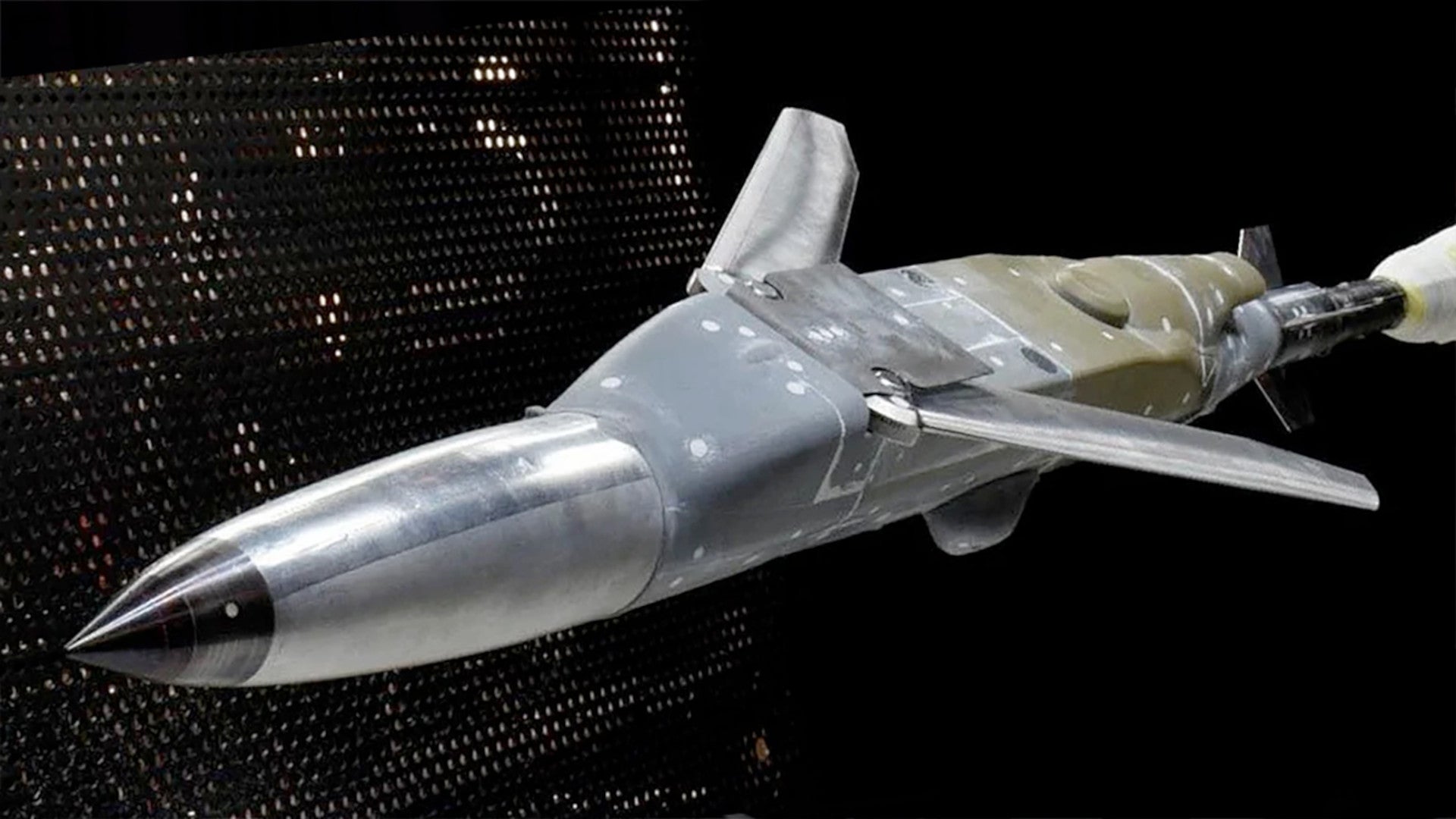
Jet-Powered JDAM Aims To Turn Bombs Into Cruise Missiles
Powered JDAMs could attack targets on land and sea, deploy naval mines, or even act as decoys, over long ranges.
If the PJDAM is successfully tested then something else to be considered is a ground-launched PJDAM using the Tomahawk's Mk-135 launch-booster.
Not a thithe US army is likely interested in.
Not a thithe US army is likely interested in.
True, however there may be other militaries who can't afford the Tomahawk cruise-missile but can afford a budget cruise-missile such as the proposed PJDAM or just want a cheap short-range cruise-missile.
Scott Kenny
ACCESS: Above Top Secret
- Joined
- 15 May 2023
- Messages
- 5,999
- Reaction score
- 4,855
I dunno, I could see the US Army wanting something a lot cheaper than SM6 or Tomahawks for long range precision fires. Simple and unstealthy, but good for either spoofing while stealthier missiles go, or saturating defenses.Not a thithe US army is likely interested in.
Especially if they make a 2000lb version, I can really see the Army wanting a cheap 1000lb boom.
Ainen
I really should change my personal text
- Joined
- 25 August 2011
- Messages
- 476
- Reaction score
- 438
Are tercom sensor and a somewhat more complete airframe that expensive?True, however there may be other militaries who can't afford the Tomahawk cruise-missile but can afford a budget cruise-missile such as the proposed PJDAM or just want a cheap short-range cruise-missile.
Are tercom sensor and a somewhat more complete airframe that expensive?
I'd say also keep in mind that the JDAM is just a bolt-on tail-kit (With some mid-body strakes for lift on the JDAM and folding-wings for the JDAM-ER) that uses an inexpensive GPS-aided inertial-guidance system with steering to the tail control-fins via a reality simple strapdown autopilot, the JDAM has been mass-produced in enormous numbers. Also the JDAM doesn't have seeker of any sort except for a variant that has a nose-mounted SAL-seeker for attacking moving targets.
Scott Kenny
ACCESS: Above Top Secret
- Joined
- 15 May 2023
- Messages
- 5,999
- Reaction score
- 4,855
Tomahawks are on the order of $1.5mil or more. An unpowered JDAM is under $40k all told. Let's be rude and double that to $80k to pay for booster and sustain engine. I can buy 20 ground launched powered JDAMs for the cost of a single Tomahawk.Are tercom sensor and a somewhat more complete airframe that expensive?
In regards to the LJDAM does anyone know the dimensions of its' SAL seeker (The DSU-38/B)? Why I'm asking is that it occurred to me earlier today that you could get a PJDAM (And JDAM-ER) with the ability to autonomously attack moving targets (And refine the terminal aim-point on fixed targets) if it had a nose mounted SDB-II multi-mode seeker (With a suitable adapter to mount in on the nose of the Mk-80 series bomb).
Scott Kenny
ACCESS: Above Top Secret
- Joined
- 15 May 2023
- Messages
- 5,999
- Reaction score
- 4,855
I don't know the thread, but it's a standard US bomb nose fuze well that the LJDAM seeker screws into. I'd actually bet that the threaded adapter plate is a separate piece from the rest of the outer body of the seeker, so all you'd have to do would be design a replacement outer body that will get bolted onto the threaded adapter.In regards to the LJDAM does anyone know the dimensions of its' SAL seeker (The DSU-38/B)? Why I'm asking is that it occurred to me earlier today that you could get a PJDAM (And JDAM-ER) with the ability to autonomously attack moving targets (And refine the terminal aim-point on fixed targets) if it had a nose mounted SDB-II multi-mode seeker (With a suitable adapter to mount in on the nose of the Mk-80 series bomb).
so all you'd have to do would be design a replacement outer body that will get bolted onto the threaded adapter.
In regards to an adapter I'm thinking of the sort adapter used to mount the laser-seeker onto the nose of a Paveway LGB.
timmymagic
Forever disappointed in MoD procurement...
- Joined
- 23 August 2011
- Messages
- 1,055
- Reaction score
- 2,801
Let's be rude and double that to $80k to pay for booster and sustain engine. I can buy 20 ground launched powered JDAMs for the cost of a single Tomahawk.
Powered JDAM would cost a lot more. You won't get change from $150k. And thats probably at the lowest end of estimates.
Small turbine engines are surprisingly expensive. Even if TDI's J-85 has managed to get the price down dramatically it won't be less than $50k for the motor alone, and I think that might be far too low...add in a wing kit, booster etc etc...
kqcke for you
PUMA PUMA PUMA
- Joined
- 3 November 2022
- Messages
- 540
- Reaction score
- 413
I think atleast 200k
